Learning Materials
- Business Studies
- Combined Science
- Computer Science
- Engineering
- English Literature
- Environmental Science
- Human Geography
- Macroeconomics
- Microeconomics
- Experimental Research
If there's one thing to be sure about marketing, it is the fact that it can burn a lot of money. A Gartner study reveals businesses spend roughly 12 percent of their revenue on advertising and marketing. 8 That's $1.20 out of every $10 they make! Luckily, marketing doesn't always have to be wasteful. In fact, if marketers know where and how to invest their money, they can save the company tons of unwanted costs while maximizing ROI. This is the reason for experimental research. Let's dive in and learn all about this research method.
Millions of flashcards designed to help you ace your studies
- Cell Biology
A company changes its packaging but keeps everything the same to observe the impact of the new packaging on sales. This is an example of _____ experimental research.
A bakery changes the amount of flour in its bread to observe customer reactions. This is an example of ______ experimental research.
Which research method provides an accurate description of the current state?
The descriptive research method can assess the causal relationship among variables.
Which research methods are used to understand the relationship between variables? (More than one answers are possible)
In quasi-experimental research, the variation is caused by _________.
Experimental research mostly relies on guesswork, not actual data from real experience.
A variable is a value that _______.
A variable that depends on another variable is called _________.
Research, where you can change the independent variable to measure the effect on the dependent variable, is called __________.
Correlational research allows the manipulation of variables.
Need help? Meet our AI Assistant

Need help with Experimental Research? Ask our AI Assistant

Review generated flashcards
to start learning or create your own AI flashcards
Start learning or create your own AI flashcards


StudySmarter Editorial Team
Team Experimental Research Teachers
- 9 minutes reading time
- Checked by StudySmarter Editorial Team
- Customer Driven Marketing Strategy
- Digital Marketing
- Integrated Marketing Communications
- International Marketing
- Introduction to Marketing
- Marketing Campaign Examples
- Marketing Information Management
- Behavioral Targeting
- Customer Relationship Management
- Ethics in Marketing
- Focus Groups
- Interview in Research
- Market Calculations
- Market Mapping
- Market Research
- Marketing Analytics
- Marketing Information System
- Marketing KPIs
- Methods of Market Research
- Multi level Marketing
- Neuromarketing
- Observational Research
- Online Focus Groups
- PED and YED
- Primary Market Research
- Research Instrument
- Sampling Plan
- Secondary Market Research
- Survey Research
- Understanding Markets and Customers
- Marketing Management
- Strategic Marketing Planning
Jump to a key chapter
Experimental Research in Marketing
Before we learn what experimental research means, we must first understand why it is adopted. To do so, let's go back to two fundamental concepts: Mass marketing and Targeted marketing.
Mass marketing is a strategy where companies ignore the differences between market segments and try to reach as many people as possible.
Unfortunately, this is rather expensive and only affordable by prominent firms. For smaller brands, a better way to access customers is through targeted marketing:
Targeted marketing means breaking the market into smaller segments and focusing marketing efforts on them individually.
However, even when companies know what customers to target, it remains a challenge to capture their attention. How to know what the audience is interested in and craft a marketing message that will appeal to them? This is where experimental research comes in.
Experimental Research Definition
Experimental research is a test of which marketing strategy is most likely to work. But rather than guesswork, it uses real data from experiments.
Experimental research involves making hypotheses about what marketing activity is likely to appeal to customers and collecting data to see if it is true.
One key feature of experimental research is that it explores the relationship between independent and dependent variables.
- Independent variables are variables that do not depend on other variables.
- Dependent variables are variables that change as independent variables change.
In experimental research, the independent variable is the cause and the dependent variable is the effect. As a marketer, you can influence the cause to observe changes in the effect, but not the other way around. The effect can only be tested or measured.
This is why experimental research is so powerful. It not only allows you to see the immediate results of a marketing decision but also manipulates the cause to influence the result.
When you're confused about independent and dependent variables, ask these three questions:
Remember earlier we mentioned experimental research examines the relationship of independent and dependent variables, can you guess what this relationship is called? (Hint: an independent variable is a cause and a dependent variable effect.)
Did you say it is a cause-and-effect relationship? Spot on! We don't have to dive deeper into this right now. Just keep in mind that in a cause-and-effect relationship, one event takes place before another, and the second event can't happen before the first. For instance, you must add or remove a menu item to see how it affects sales revenue.
Experimental Research Example
Suppose you start an ice cream stall in the summer and decide to try out different ice cream flavors to see which one performs best. In this case, the ice cream flavor is the independent variable, and the ice cream sale revenue affected by the change of flavor is a dependent variable.
Note here that the independent variable is the cause while the dependent variable is the effect . It is the change in the ice cream flavor that leads to the change in ice cream sales. While you can control which ice cream flavor to sell, you can't know which flavor will bring you the most profit without experimenting. This brings us back to a point early on: A cause can be manipulated to test or measure the effect.
Types of Experimental Research
When it comes to experimental research, there are three main types: controlled, manipulated, and random.
Controlled experimental research - Research where all outside factors are kept constant. Only the measured variable is changed. For example, a hamburger store changes its packaging while keeping everything else (ingredients, flavor, etc.) the same to observe the effect of the new packaging on sales.
Manipulated experimental research - Research where you can change the independent variable to measure the effect on the dependent variable. For instance, a bakery changes the amount of flour in bread and sees how customers respond.
Random experimental research - A combination of the above two. For example, you add a new drink to the menu of all coffee stores you own, with everything remaining the same. If you randomly check a store, you will see that the sales may go up or down depending on the location.
The experimental research method may be different, but the idea is always the same, to find out the strategy that helps the business improve its performance.
Descriptive vs Correlational vs Experimental Research
Have you heard of descriptive and correlational research before? If you have, you might also know that they are human behavior research methods just like experimental research. Don't worry if they can't tell the difference between them. This section will help clearly distinguish these three types of research methods.
Let's start with the definitions:
Descriptive research is the type of research that provides an accurate description of a situation. As a result, it is often used to discover information, make predictions, and test a hypothesis. The only drawback is that it does not explain the relationship between different variables.
Correlational research is also used to test hypotheses and make predictions. However, unlike descriptive research, it allows the researcher to observe the causal relationship between variables.
Experimental research is similar to correlational research but goes one step further by letting the researcher manipulate the variable to see different results. 1
Here's a more detailed comparison table:
Table 2. Descriptive vs Correlational vs Experimental Research. Source: Openpress.
Difference between Correlational and Experimental Research
Correlational research shows only the association between two variables, not necessarily the cause-and-effect relationship between them. Experimental research, on the other hand, allows the marketer to manipulate the independent variable to measure its effect on the dependent variable.
Correlational research only answers the question: Is there a positive or negative correlation between two variables? Experimental research goes one step further by measuring the impact of this correlation.
Suppose a restaurant wants to observe the effect of a new sauce recipe on sales. If using correlational research , the restaurant owner can only observe the relationship between one type of sauce and sales at a time. With experimental research , the owner can try out different types of sauce for a week and see which one drives the most sales and adds it to the menu.
Quasi-Experimental Research
Marketers use quasi-experimental research to understand the change in customer or firm behavior. According to Campell, this is the type of research where the " data generating process is not intentionally experimental" but caused by an external shock. 6
In quasi-experimental research , an external shock causes a variation that the researcher will use to study its impact on a situation.
Quasi-experimental research of eBay : The company paused advertising on Bing and saw little traffic loss. This inspired a follow-up experiment where the company randomly stopped paid search advertising and discovered similar results. In this example, the Quasi-experiment was used to study the consequence of the company's actions. 7
Experimental Research - Key Takeaways
- Experimental research conducts experiments to determine which marketing activity appeals to customers.
Experimental research is based on actual data and real-life situations rather than guesswork by the researcher.
Besides experimental research, there are two other approaches to studying human behavior - descriptive and correlational research.
Experimental research differs from other types of research in that it studies the causal relationship between independent and dependent variables.
Quasi-experimental research involves researching the impact of a variation caused by an external shock on a situation. Marketers use quasi-experimental research to understand the change in customer or firm behavior.
- Charles Stangor & Jennifer Walinga, Psychologists Use Descriptive, Correlational, and Experimental Research Designs to Understand Behaviour, n.d., https://openpress.usask.ca/introductiontopsychology/chapter/psychologists-use-descriptive-correlational-and-experimental-research-designs-to-understand-behavior/
- Know This, Descriptive Market Research, n.d., https://www.knowthis.com/planning-for-marketing-research/descriptive-market-research/
- Know This, Causal Market Research, n.d., https://www.knowthis.com/planning-for-marketing-research/causal-market-research/
- Stangor, Research methods for the behavioural sciences (4th ed.), 2011.
- Pritha Bhandari, Independent vs. Dependent Variables | Definition & Examples, 2022.
- Campbell, Roy H., A Managerial Approach to Advertising Measurement, Journal of Marketing, 1965.
- Blake, Thomas, Nosko, Chris, Tadelis, Steven, Consumer Heterogeneity and Paid Search Effectiveness: A Large-Scale Field Experiment, Econometrica, 83 (1), 155–74, 2015.
- Tanya Castaneda, How Successful Companies Spend Their Advertising Budget, 2018, https://mediamaxnetwork.com/blog/how-successful-companies-spend-their-advertising-budget/.
Flashcards in Experimental Research 14
Descriptive research method
Correlational research
an external shock

Learn with 14 Experimental Research flashcards in the free StudySmarter app
We have 14,000 flashcards about Dynamic Landscapes.
Already have an account? Log in
Frequently Asked Questions about Experimental Research
What is experimental research?
Experimental research involves testing and analysing marketing variables changes to determine which marketing activity will appeal to customers.
What is quasi-experimental research?
Quasi-experimental research is the research on how a variable caused by an external shock should impact the firm's performance. It is mainly used to understand the consequences of customer or firm behaviour changes.
What is the purpose of experimental research?
The purpose of experimental research is to find out which marketing activity will have the most positive impact on the business. It also helps marketers learn about customers' needs and develop offerings that match their expectations.
What are the types of experimental research?
Experimental research can be controlled, manipulated, or random. The controlled experimental research is conducted where all outside factors are kept the same. Only the measured variable is changed. The manipulated experimental research involves changing the variable to obtain the desired results. Random experimental research is the combination of the above two.
What is the difference between correlational and experimental research?
Correlational research shows only the association between two variables, not necessarily the cause and effect relationship between them. In experimental research, you can manipulate the independent variable to measure its effect on the dependent variable. In correlational research, you must keep everything as it is.
Test your knowledge with multiple choice flashcards

Join the StudySmarter App and learn efficiently with millions of flashcards and more!
That was a fantastic start, you can do better, sign up to create your own flashcards.
Access over 700 million learning materials
Study more efficiently with flashcards
Get better grades with AI
Already have an account? Log in
Keep learning, you are doing great.
Discover learning materials with the free StudySmarter app

About StudySmarter
StudySmarter is a globally recognized educational technology company, offering a holistic learning platform designed for students of all ages and educational levels. Our platform provides learning support for a wide range of subjects, including STEM, Social Sciences, and Languages and also helps students to successfully master various tests and exams worldwide, such as GCSE, A Level, SAT, ACT, Abitur, and more. We offer an extensive library of learning materials, including interactive flashcards, comprehensive textbook solutions, and detailed explanations. The cutting-edge technology and tools we provide help students create their own learning materials. StudySmarter’s content is not only expert-verified but also regularly updated to ensure accuracy and relevance.
Team Marketing Teachers
Study anywhere. Anytime.Across all devices.
Create a free account to save this explanation..
Save explanations to your personalised space and access them anytime, anywhere!
By signing up, you agree to the Terms and Conditions and the Privacy Policy of StudySmarter.
Sign up to highlight and take notes. It’s 100% free.
Join over 22 million students in learning with our StudySmarter App
The first learning app that truly has everything you need to ace your exams in one place
- Flashcards & Quizzes
- AI Study Assistant
- Study Planner
- Smart Note-Taking


What is Experimental Research: Definition, Types & Examples
Understand how experimental research enables researchers to confidently identify causal relationships between variables and validate findings, enhancing credibility.
June 16, 2024

In this Article
Short on time? Get an AI generated summary of this article instead
AI-generated article summary
This blog covers the essentials of experimental research and its application in businesses. It emphasizes the value of controlled and systematic research design for establishing cause-and-effect relationships, managing variables, and generating reliable results. The blog explains the types of experimental research, including pre-experimental, true experimental, and quasi-experimental designs, each with distinct structures that fit different research needs. The importance of experimental research is outlined through examples such as product testing, marketing optimization, pricing strategies, and customer experience enhancement. These examples show how businesses can use experimental research to test hypotheses, improve products, and make informed decisions. Despite its benefits, the blog also highlights the disadvantages, like ethical concerns, artificial settings, high costs, and participant biases. Finally, the blog suggests leveraging tools like Entropik's Decode for AI-driven market research, which allows businesses to experiment and analyze consumer behavior for better decision-making. The post concludes with a brief FAQ section, answering common questions about experimental research, including examples and its application in various fields like medicine, psychology, and education.
Get fast AI summaries of customer calls and feedback with magic summarize in Decode
Experimental research is crucial for companies because it allows them to precisely control and measure key factors, identify dependent and independent elements, and set conditions to observe their effects. By changing one variable systematically, it is possible to determine possible cause-and-effect relations and analyze how specific observed effects depend on them.
Read this blog to learn more about how experimental research design can drive business success and provide practical examples of its application in various industries.
What is Experimental Research?
Experimental research is a systematic and scientific approach in which the researcher manipulates one or more independent variables and observes the effect on a dependent variable while controlling for extraneous variables. This method allows for the establishment of cause-and-effect relationships between variables.
Experimental research involves using control groups, random assignment, and standardized procedures to ensure the reliability and validity of the results. It is commonly used in psychology, medicine, and the social sciences to test hypotheses and theories under controlled conditions.
Example of Experimental Research
An experimental research example scenario can be a clinical trial for a new medication. This scenario aims to determine whether the new type of drug applies to the patient. Accordingly, patients with hypertension diagnosed by a medical practitioner are randomly assigned to two groups.
The experimental group is subjected to the new medication the research treatment facility delivers. In contrast, the control group is treated with either a placebo or the medical drugs previously used by the patients. The data will be both quantitative and qualitative .
Quantitative data will include blood pressure levels or symptom severity scores. Qualitative data will include symptoms reported by the patient or symptoms observed by the practitioner and side effects experienced by the patients. Consequently, the research on which type of drug is effective is tested, and results are obtained by comparing the patient's conditions in the two groups.
Researchers believe a new medication works if the experimental group shows significant symptom improvements compared to a control group and has no immediate side effects. Testing many patients increases confidence that the effects are due to the medication and not a placebo effect.
What Are The Different Types of Experimental Research?
The following are the different types of experimental research: Pre-Experimental Research
- One-Shot Case Study: A single group is exposed to a treatment and then observed for outcomes. There is no control group for comparison.
- One-Group Pretest-Posttest Design: A single group is measured before and after treatment to observe changes.
True Experimental Research
- Randomized Controlled Trials (RCT): Participants are randomly assigned to experimental and control groups to ensure comparability and reduce bias. This design is considered the gold standard in experimental research.
- Pretest-Posttest Control Group Design: Both the experimental and control groups are measured before and after the treatment. The experimental group receives the treatment, while the control group does not.
- Posttest-Only Control Group Design: Participants are randomly assigned to experimental and control groups, but measurements are taken only after the treatment is administered to the experimental group.
Quasi-Experimental Research
- Non-Equivalent Groups Design: Similar to the pretest-posttest control group design, participants are not randomly assigned to groups. This design is often used when random assignment is not feasible.
- Interrupted Time Series Design: Multiple measurements are taken before and after a treatment to observe changes over time. This design helps control time-related variables.
- Matched Groups Design: Participants are matched based on certain characteristics before being assigned to experimental and control groups, ensuring comparable groups.
Factorial Design
- Full Factorial Design: Involves manipulating two or more independent variables simultaneously to observe their interaction effects on the dependent variable. All possible combinations of the independent variables are tested.
- Fractional Factorial Design: A subset of the possible combinations of independent variables is tested, making it more practical when dealing with many variables.
What is the Importance of Experimental Research?

Establishing Causality
Experimental research is essential for establishing correlations between variables of interest and demonstrating causality. It allows researchers to manipulate one or more independent variables considered the cause and record changes in the dependent variable, the effect.
Controlling Variables
One of the strengths of this type of research is that it allows for controlling the effect of extraneous variables. This means that experimental research reduces alternative explanations of effects. Using control groups and random assignment to conditions, the experimental method can accurately determine whether the observed group differences resulted from manipulating the independent variable or other factors.
Providing Reliable and Valid Results
A structured and rigorous methodology while conducting experimental research minimizes the possibility of measurement errors and biases. In addition, randomized controlled trials are generally accepted as the gold standard in research. Because of these features, the data’s reliability can be confirmed in advance by similar findings, and the results will also be more replicable and generalizable to the broader population.
Informing Decision-Making
Experimental research provides empirical evidence and data to support important organizational decisions, such as product testing and experimentation, marketing strategies, or improving operational processes and activities.
Driving Innovation
Experimental research drives innovation by systematically testing new ideas and interventions. It allows companies and researchers to experiment with novel concepts in a controlled environment, identify successful innovations, and confidently scale them up.
What Are The Disadvantages of Experimental Research?
Ethical concerns.
Experimental research implies ethical dilemmas, especially when human subjects are concerned. Generally speaking, ethical principles prohibit manipulating variables, specifically intentionally causing harm to, offending, and inducing psychological or physical pressure. Ethics guidelines and review boards are expected to curb risks in an experiment, but they could also somewhat restrain findings.
Artificial Settings
Most experimental studies are conducted in highly controlled artificial conditions, such as laboratories, where external variables are properly controlled and isolated. Thus, the conclusions of the findings might only sometimes be extended to the real world, so they will only sometimes be applicable. The main type of validity under which this problem falls is external validity. Some variables cannot be controlled or do not appear in artificial conditions.
High Costs and Time Consumption
Experimental research is expensive and time-consuming. There are various reasons for this statement. First, such a type of research requires specialized equipment, controlled conditions of measurement, and large sample sizes, which means increased costs. Second, designing an experiment, preparing all the necessary information and tools for its implementation, running it, and analyzing the data received is usually time-consuming, even in the simplest cases.
Practical and Logistical Constraints
Some variables or phenomena cannot be either manipulated or controlled. Experimental studies are impractical if processes are complex, large-scale, or long-term. For example, a lab cannot treat anything related to the environment or societal changes. Therefore, due to the inability to conduct experiments based on such phenomena, some questions can only be studied by other experimental research methods, such as observational or correlational.
Participant Behavior and Bias
Experimental studies may be biased based on the participants’ awareness of being observed during the process. Also called the Hawthorne effect, another issue that can hurt the study’s validity, especially in medical research, is using control groups. Although they are necessary to measure the efficiency of a certain treatment, such research may involve not providing some groups with potentially beneficial treatment.
These two problems may affect the results and make them unethical. In either case, corrective steps should be taken to address this issue and ensure that the results have been obtained properly.
How Businesses Can Leverage Experimental Research?
Product development and testing.
Businesses can use experimental research to test new products or features before launching them. By creating controlled experiments, such as A/B testing , companies can compare different versions of a product to see which one performs better in terms of customer satisfaction, usability, and sales. This approach allows businesses to refine their products based on empirical evidence, reducing the risk of failure upon release.
Marketing Strategy Optimization
Experimental research is invaluable for optimizing marketing strategies. Businesses can test different marketing messages, channels, and tactics to determine which are most effective in engaging their target audience and driving conversions. For example, they can conduct randomized controlled trials to compare the impact of various advertising campaigns on consumer behavior , enabling data-driven decisions that enhance marketing ROI.
Customer Experience Enhancement
Customer experience is increasingly more critical for retention and loyalty. Companies use experimental research to determine the best practices for customer service, website design, and in-store experience. Through experimenting and measuring responses, companies can identify what promotes satisfaction and loyalty and apply these results to enhance customer experience.
Pricing Strategies
Experimental research helps businesses determine optimal pricing strategies. Companies can analyze consumer reactions and willingness to pay by testing different price points in controlled settings. This approach enables businesses to find the price that maximizes revenue without deterring customers, balancing profitability with market competitiveness.
Operational Efficiency
Businesses can use experimental research to enhance operational efficiency. For instance, they can test various processes, workflows, or technologies to identify which ones improve productivity, reduce costs, or enhance quality. Companies can implement the most effective strategies and practices by systematically experimenting with different operational changes, leading to better overall performance.
Final Words
Experimental research has become a powerful instrument for modern business development. It systematically tests assumptions and variables associated with various activities, from product development, marketing strategies, and customer experiences to pricing and operational efficiencies.

Get your hands on Decode , an AI-powered market research tool that can help you test hypotheses about consumer behavior and preferences. Companies can determine cause-and-effect relationships by manipulating specific variables, such as pricing or advertising methods, and observing the effects on consumer responses using Decode diary studies .
This research method collects qualitative data on user behaviors, activities, and experiences over time. This helps them make informed decisions about product development, marketing strategies, and overall business operations.
Frequently Asked Questions (FAQs)
Question 1: what are examples of experimental research.
Answer: Examples of experimental research include drug trials, psychology experiments, and studies testing new teaching methods. These experiments involve manipulating variables and comparing outcomes to establish causal relationships.
Question 2: What is the meaning of experimental design in research?
Answer: Experimental design in research refers to the methodical planning of experiments to control variables, minimize bias, and draw valid conclusions. It involves carefully considering factors like sample size, randomization, and control groups.
Question 3: What are the characteristics of experimental research?
Answer: Characteristics of experimental research include manipulation of variables, random assignment, control groups, and measurement of outcomes. These features ensure that researchers can isolate the effects of specific variables and draw reliable conclusions.
Question 4: Where is experimental research used?
Answer: Experimental research is used in medicine, psychology, education, and natural sciences to investigate cause-and-effect relationships and validate hypotheses. It provides a systematic approach to testing theories and informing evidence-based practices.
Frequently Asked Questions
Lorem ipsum dolor sit amet, consectetur adipiscing elit. Suspendisse varius enim in eros elementum tristique. Duis cursus, mi quis viverra ornare, eros dolor interdum nulla, ut commodo diam libero vitae erat. Aenean faucibus nibh et justo cursus id rutrum lorem imperdiet. Nunc ut sem vitae risus tristique posuere.
With lots of unique blocks, you can easily build a page without coding.
Click on Study templates
Start from scratch
Add blocks to the content
Saving the Template
Publish the Template
Soham is a true Manchester United fan who finds joy in more than just football. Whether navigating the open road, scoring virtual goals in FIFA, reading novels, or enjoying quality time with friends, Soham embraces a life full of diverse passions.
Product Marketing Specialist
Related Articles

Subjective vs Objective Research: A Competitive Analysis
Explore the differences between subjective and objective research methods, their impact on data analysis, and how to apply each approach effectively.

Predictive Analytics: Harnessing the Power to Foresee the Future
AI-Driven Predictive Analytics: The Key to Forecasting Market Trends, Boosting Efficiency, and Accelerating Business Growth

Mastering the Art of Conceptual Framework in Market Research
Learn how a conceptual framework in market research guides your study, connects theory with practice and ensures a clear structure for effective analysis and results.

The Ultimate User Testing Guide
Explore our guide on user testing, covering its importance, methods, and how to enhance user experience through actionable insights. Read more!

Stratified Random Sampling: A Complete Guide with Definition, Method, and Examples
Master Stratified Random Sampling: A Step-by-Step Guide to Boost Precision in Research and Decision-Making for Researchers and Product Managers

Building Customer Loyalty: Best Practices and Strategies
Customer loyalty is a cornerstone of any successful business. This comprehensive guide will explore various strategies and tactics to help you cultivate a loyal customer base.

How to Create Buyer Personas That Drive Product and Marketing Success?
Develop detailed, data-backed buyer personas to improve product development, refine marketing strategies, and deliver personalized experiences.

What is a Survey? Benefits, Types, Blocks, Use Cases, and More
Discover the power of surveys: types, benefits, use cases, and how to create effective surveys using the AI-powered platform Decode.

Top AI Events You Do Not Want to Miss in 2024
Here are all the top AI events for 2024, curated in one convenient place just for you.

Top Insights Events You Do Not Want to Miss in 2024
Here are all the top Insights events for 2024, curated in one convenient place just for you.

Top CX Events You Do Not Want to Miss in 2024
Here are all the top CX events for 2024, curated in one convenient place just for you.

How to Build an Experience Map: A Complete Guide
An experience map is essential for businesses, as it highlights the customer journey, uncovering insights to improve user experiences and address pain points. Read to find more!

Everything You Need to Know about Intelligent Scoring
Are you curious about Intelligent Scoring and how it differs from regular scoring? Discover its applications and benefits. Read on to learn more!

Qualitative Research Methods and Its Advantages In Modern User Research
Discover how to leverage qualitative research methods, including moderated sessions, to gain deep user insights and enhance your product and UX decisions.

The 10 Best Customer Experience Platforms to Transform Your CX
Explore the top 10 CX platforms to revolutionize customer interactions, enhance satisfaction, and drive business growth.

TAM SAM SOM: What It Means and How to Calculate It?
Understanding TAM, SAM, SOM helps businesses gauge market potential. Learn their definitions and how to calculate them for better business decisions and strategy.

Understanding Likert Scales: Advantages, Limitations, and Questions
Using Likert scales can help you understand how your customers view and rate your product. Here's how you can use them to get the feedback you need.

Mastering the 80/20 Rule to Transform User Research
Find out how the Pareto Principle can optimize your user research processes and lead to more impactful results with the help of AI.

Understanding Consumer Psychology: The Science Behind What Makes Us Buy
Gain a comprehensive understanding of consumer psychology and learn how to apply these insights to inform your research and strategies.

A Guide to Website Footers: Best Design Practices & Examples
Explore the importance of website footers, design best practices, and how to optimize them using UX research for enhanced user engagement and navigation.

Customer Effort Score: Definition, Examples, Tips
A great customer score can lead to dedicated, engaged customers who can end up being loyal advocates of your brand. Here's what you need to know about it.

How to Detect and Address User Pain Points for Better Engagement
Understanding user pain points can help you provide a seamless user experiences that makes your users come back for more. Here's what you need to know about it.

What is Quota Sampling? Definition, Types, Examples, and How to Use It?
Discover Quota Sampling: Learn its process, types, and benefits for accurate consumer insights and informed marketing decisions. Perfect for researchers and brand marketers!

What Is Accessibility Testing? A Comprehensive Guide
Ensure inclusivity and compliance with accessibility standards through thorough testing. Improve user experience and mitigate legal risks. Learn more.

Maximizing Your Research Efficiency with AI Transcriptions
Explore how AI transcription can transform your market research by delivering precise and rapid insights from audio and video recordings.

Understanding the False Consensus Effect: How to Manage it
The false consensus effect can cause incorrect assumptions and ultimately, the wrong conclusions. Here's how you can overcome it.

5 Banking Customer Experience Trends to Watch Out for in 2024
Discover the top 5 banking customer experience trends to watch out for in 2024. Stay ahead in the evolving financial landscape.

The Ultimate Guide to Regression Analysis: Definition, Types, Usage & Advantages
Master Regression Analysis: Learn types, uses & benefits in consumer research for precise insights & strategic decisions.

EyeQuant Alternative
Meet Qatalyst, your best eyequant alternative to improve user experience and an AI-powered solution for all your user research needs.

EyeSee Alternative
Embrace the Insights AI revolution: Meet Decode, your innovative solution for consumer insights, offering a compelling alternative to EyeSee.

Skeuomorphism in UX Design: Is It Dead?
Skeuomorphism in UX design creates intuitive interfaces using familiar real-world visuals to help users easily understand digital products. Do you know how?

Top 6 Wireframe Tools and Ways to Test Your Designs
Wireframe tools assist designers in planning and visualizing the layout of their websites. Look through this list of wireframing tools to find the one that suits you best.

Revolutionizing Customer Interaction: The Power of Conversational AI
Conversational AI enhances customer service across various industries, offering intelligent, context-aware interactions that drive efficiency and satisfaction. Here's how.

User Story Mapping: A Powerful Tool for User-Centered Product Development
Learn about user story mapping and how it can be used for successful product development with this blog.

What is Research Hypothesis: Definition, Types, and How to Develop
Read the blog to learn how a research hypothesis provides a clear and focused direction for a study and helps formulate research questions.

Understanding Customer Retention: How to Keep Your Customers Coming Back
Understanding customer retention is key to building a successful brand that has repeat, loyal customers. Here's what you need to know about it.

Demographic Segmentation: How Brands Can Use it to Improve Marketing Strategies
Read this blog to learn what demographic segmentation means, its importance, and how it can be used by brands.

Mastering Product Positioning: A UX Researcher's Guide
Read this blog to understand why brands should have a well-defined product positioning and how it affects the overall business.

Discrete Vs. Continuous Data: Everything You Need To Know
Explore the differences between discrete and continuous data and their impact on business decisions and customer insights.

50+ Employee Engagement Survey Questions
Understand how an employee engagement survey provides insights into employee satisfaction and motivation, directly impacting productivity and retention.

A Guide to Interaction Design
Interaction design can help you create engaging and intuitive user experiences, improving usability and satisfaction through effective design principles. Here's how.

Exploring the Benefits of Stratified Sampling
Understanding stratified sampling can improve research accuracy by ensuring diverse representation across key subgroups. Here's how.

A Guide to Voice Recognition in Enhancing UX Research
Learn the importance of using voice recognition technology in user research for enhanced user feedback and insights.

The Ultimate Figma Design Handbook: Design Creation and Testing
The Ultimate Figma Design Handbook covers setting up Figma, creating designs, advanced features, prototyping, and testing designs with real users.

The Power of Organization: Mastering Information Architectures
Understanding the art of information architectures can enhance user experiences by organizing and structuring digital content effectively, making information easy to find and navigate. Here's how.

Convenience Sampling: Examples, Benefits, and When To Use It
Read the blog to understand how convenience sampling allows for quick and easy data collection with minimal cost and effort.

What is Critical Thinking, and How Can it be Used in Consumer Research?
Learn how critical thinking enhances consumer research and discover how Decode's AI-driven platform revolutionizes data analysis and insights.

How Business Intelligence Tools Transform User Research & Product Management
This blog explains how Business Intelligence (BI) tools can transform user research and product management by providing data-driven insights for better decision-making.

What is Face Validity? Definition, Guide and Examples
Read this blog to explore face validity, its importance, and the advantages of using it in market research.

What is Customer Lifetime Value, and How To Calculate It?
Read this blog to understand how Customer Lifetime Value (CLV) can help your business optimize marketing efforts, improve customer retention, and increase profitability.

Systematic Sampling: Definition, Examples, and Types
Explore how systematic sampling helps researchers by providing a structured method to select representative samples from larger populations, ensuring efficiency and reducing bias.

Understanding Selection Bias: A Guide
Selection bias can affect the type of respondents you choose for the study and ultimately the quality of responses you receive. Here’s all you need to know about it.

A Guide to Designing an Effective Product Strategy
Read this blog to explore why a well-defined product strategy is required for brands while developing or refining a product.

A Guide to Minimum Viable Product (MVP) in UX: Definition, Strategies, and Examples
Discover what an MVP is, why it's crucial in UX, strategies for creating one, and real-world examples from top companies like Dropbox and Airbnb.

Asking Close Ended Questions: A Guide
Asking the right close ended questions is they key to getting quantitiative data from your users. Her's how you should do it.

Creating Website Mockups: Your Ultimate Guide to Effective Design
Read this blog to learn website mockups- tools, examples and how to create an impactful website design.

Understanding Your Target Market And Its Importance In Consumer Research
Read this blog to learn about the importance of creating products and services to suit the needs of your target audience.

What Is a Go-To-Market Strategy And How to Create One?
Check out this blog to learn how a go-to-market strategy helps businesses enter markets smoothly, attract more customers, and stand out from competitors.

What is Confirmation Bias in Consumer Research?
Learn how confirmation bias affects consumer research, its types, impacts, and practical tips to avoid it for more accurate and reliable insights.

Market Penetration: The Key to Business Success
Understanding market penetration is key to cracking the code to sustained business growth and competitive advantage in any industry. Here's all you need to know about it.

How to Create an Effective User Interface
Having a simple, clear user interface helps your users find what they really want, improving the user experience. Here's how you can achieve it.

Product Differentiation and What It Means for Your Business
Discover how product differentiation helps businesses stand out with unique features, innovative designs, and exceptional customer experiences.

What is Ethnographic Research? Definition, Types & Examples
Read this blog to understand Ethnographic research, its relevance in today’s business landscape and how you can leverage it for your business.


Product Roadmap: The 2024 Guide [with Examples]
Read this blog to understand how a product roadmap can align stakeholders by providing a clear product development and delivery plan.

Product Market Fit: Making Your Products Stand Out in a Crowded Market
Delve into the concept of product-market fit, explore its significance, and equip yourself with practical insights to achieve it effectively.

Consumer Behavior in Online Shopping: A Comprehensive Guide
Ever wondered how online shopping behavior can influence successful business decisions? Read on to learn more.

How to Conduct a First Click Test?
Why are users leaving your site so fast? Learn how First Click Testing can help. Discover quick fixes for frustration and boost engagement.

What is Market Intelligence? Methods, Types, and Examples
Read the blog to understand how marketing intelligence helps you understand consumer behavior and market trends to inform strategic decision-making.

What is a Longitudinal Study? Definition, Types, and Examples
Is your long-term research strategy unclear? Learn how longitudinal studies decode complexity. Read on for insights.

What Is the Impact of Customer Churn on Your Business?
Understanding and reducing customer churn is the key to building a healthy business that keeps customers satisfied. Here's all you need to know about it.

The Ultimate Design Thinking Guide
Discover the power of design thinking in UX design for your business. Learn the process and key principles in our comprehensive guide.

100+ Yes Or No Survey Questions Examples
Yes or no survey questions simplify responses, aiding efficiency, clarity, standardization, quantifiability, and binary decision-making. Read some examples!

What is Customer Segmentation? The ULTIMATE Guide
Explore how customer segmentation targets diverse consumer groups by tailoring products, marketing, and experiences to their preferred needs.

Crafting User-Centric Websites Through Responsive Web Design
Find yourself reaching for your phone instead of a laptop for regular web browsing? Read on to find out what that means & how you can leverage it for business.

How Does Product Placement Work? Examples and Benefits
Read the blog to understand how product placement helps advertisers seek subtle and integrated ways to promote their products within entertainment content.

The Importance of Reputation Management, and How it Can Make or Break Your Brand
A good reputation management strategy is crucial for any brand that wants to keep its customers loyal. Here's how brands can focus on it.

A Comprehensive Guide to Human-Centered Design
Are you putting the human element at the center of your design process? Read this blog to understand why brands must do so.

How to Leverage Customer Insights to Grow Your Business
Genuine insights are becoming increasingly difficult to collect. Read on to understand the challenges and what the future holds for customer insights.

The Complete Guide to Behavioral Segmentation
Struggling to reach your target audience effectively? Discover how behavioral segmentation can transform your marketing approach. Read more in our blog!

Creating a Unique Brand Identity: How to Make Your Brand Stand Out
Creating a great brand identity goes beyond creating a memorable logo - it's all about creating a consistent and unique brand experience for your cosnumers. Here's everything you need to know about building one.

Understanding the Product Life Cycle: A Comprehensive Guide
Understanding the product life cycle, or the stages a product goes through from its launch to its sunset can help you understand how to market it at every stage to create the most optimal marketing strategies.

Empathy vs. Sympathy in UX Research
Are you conducting UX research and seeking guidance on conducting user interviews with empathy or sympathy? Keep reading to discover the best approach.

What is Exploratory Research, and How To Conduct It?
Read this blog to understand how exploratory research can help you uncover new insights, patterns, and hypotheses in a subject area.

First Impressions & Why They Matter in User Research
Ever wonder if first impressions matter in user research? The answer might surprise you. Read on to learn more!

Cluster Sampling: Definition, Types & Examples
Read this blog to understand how cluster sampling tackles the challenge of efficiently collecting data from large, spread-out populations.

Top Six Market Research Trends
Curious about where market research is headed? Read on to learn about the changes surrounding this field in 2024 and beyond.
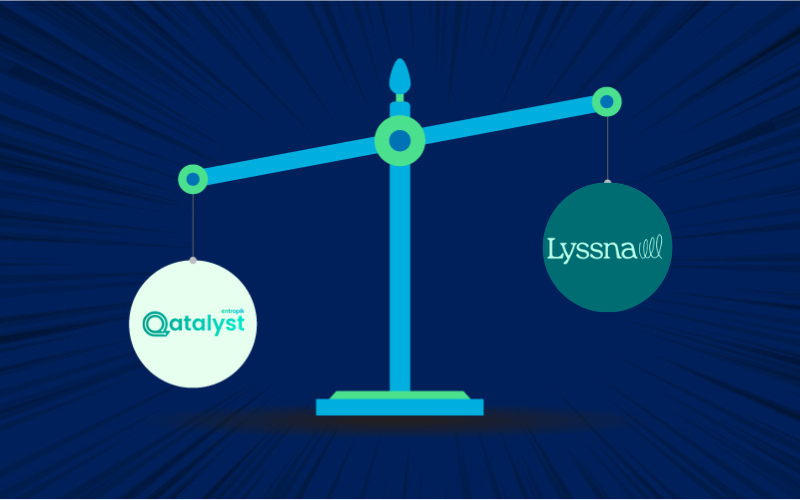
Lyssna Alternative
Meet Qatalyst, your best lyssna alternative to usability testing, to create a solution for all your user research needs.
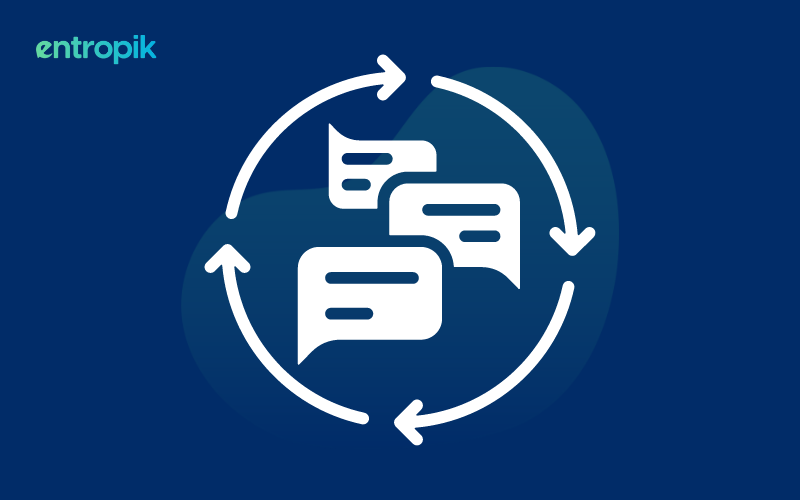
What is Feedback Loop? Definition, Importance, Types, and Best Practices
Struggling to connect with your customers? Read the blog to learn how feedback loops can solve your problem!

UI vs. UX Design: What’s The Difference?
Learn how UI solves the problem of creating an intuitive and visually appealing interface and how UX addresses broader issues related to user satisfaction and overall experience with the product or service.
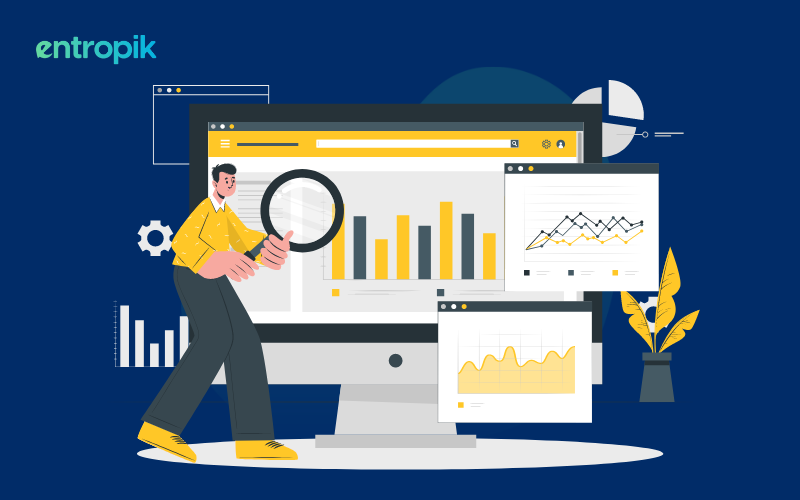
The Impact of Conversion Rate Optimization on Your Business
Understanding conversion rate optimization can help you boost your online business. Read more to learn all about it.

Insurance Questionnaire: Tips, Questions and Significance
Leverage this pre-built customizable questionnaire template for insurance to get deep insights from your audience.

UX Research Plan Template
Read on to understand why you need a UX Research Plan and how you can use a fully customizable template to get deep insights from your users!

Brand Experience: What it Means & Why It Matters
Have you ever wondered how users navigate the travel industry for your research insights? Read on to understand user experience in the travel sector.

Validity in Research: Definitions, Types, Significance, and Its Relationship with Reliability
Is validity ensured in your research process? Read more to explore the importance and types of validity in research.

The Role of UI Designers in Creating Delightful User Interfaces
UI designers help to create aesthetic and functional experiences for users. Here's all you need to know about them.
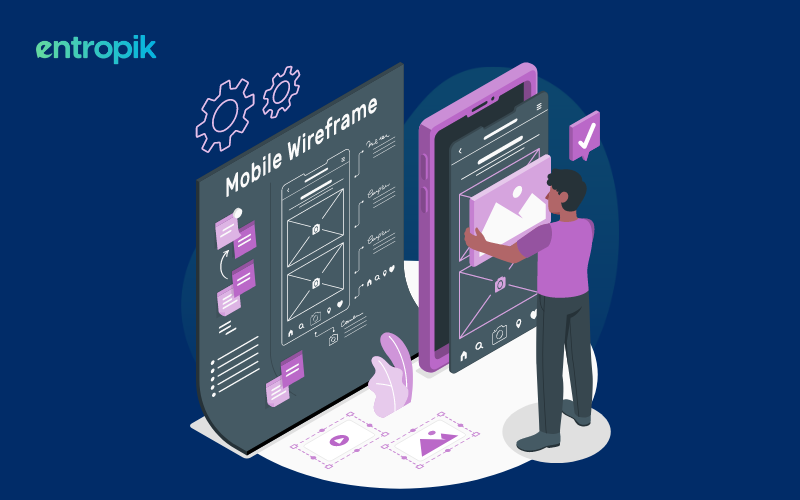
Top Usability Testing Tools to Try
Using usability testing tools can help you understand user preferences and behaviors and ultimately, build a better digital product. Here are the top tools you should be aware of.

Understanding User Experience in Travel Market Research
Ever wondered how users navigate the travel industry for your research insights? Read on to understand user experience in the travel sector.

Top 10 Customer Feedback Tools You’d Want to Try
Explore the top 10 customer feedback tools for analyzing feedback, empowering businesses to enhance customer experience.

10 Best UX Communities on LinkedIn & Slack for Networking & Collaboration
Discover the significance of online communities in UX, the benefits of joining communities on LinkedIn and Slack, and insights into UX career advancement.
Maximize Your Research Potential
Experience why teams worldwide trust our Consumer & User Research solutions.
Book a Demo

Experimental Research: Definition, Types, Design, Examples
Appinio Research · 14.05.2024 · 32min read

Experimental research is a cornerstone of scientific inquiry, providing a systematic approach to understanding cause-and-effect relationships and advancing knowledge in various fields. At its core, experimental research involves manipulating variables, observing outcomes, and drawing conclusions based on empirical evidence. By controlling factors that could influence the outcome, researchers can isolate the effects of specific variables and make reliable inferences about their impact. This guide offers a step-by-step exploration of experimental research, covering key elements such as research design, data collection, analysis, and ethical considerations. Whether you're a novice researcher seeking to understand the basics or an experienced scientist looking to refine your experimental techniques, this guide will equip you with the knowledge and tools needed to conduct rigorous and insightful research.
What is Experimental Research?
Experimental research is a systematic approach to scientific inquiry that aims to investigate cause-and-effect relationships by manipulating independent variables and observing their effects on dependent variables. Experimental research primarily aims to test hypotheses, make predictions, and draw conclusions based on empirical evidence.
By controlling extraneous variables and randomizing participant assignment, researchers can isolate the effects of specific variables and establish causal relationships. Experimental research is characterized by its rigorous methodology, emphasis on objectivity, and reliance on empirical data to support conclusions.
Importance of Experimental Research
- Establishing Cause-and-Effect Relationships : Experimental research allows researchers to establish causal relationships between variables by systematically manipulating independent variables and observing their effects on dependent variables. This provides valuable insights into the underlying mechanisms driving phenomena and informs theory development.
- Testing Hypotheses and Making Predictions : Experimental research provides a structured framework for testing hypotheses and predicting the relationship between variables . By systematically manipulating variables and controlling for confounding factors, researchers can empirically test the validity of their hypotheses and refine theoretical models.
- Informing Evidence-Based Practice : Experimental research generates empirical evidence that informs evidence-based practice in various fields, including healthcare, education, and business. Experimental research contributes to improving outcomes and informing decision-making in real-world settings by identifying effective interventions, treatments, and strategies.
- Driving Innovation and Advancement : Experimental research drives innovation and advancement by uncovering new insights, challenging existing assumptions, and pushing the boundaries of knowledge. Through rigorous experimentation and empirical validation, researchers can develop novel solutions to complex problems and contribute to the advancement of science and technology.
- Enhancing Research Rigor and Validity : Experimental research upholds high research rigor and validity standards by employing systematic methods, controlling for confounding variables, and ensuring replicability of findings. By adhering to rigorous methodology and ethical principles, experimental research produces reliable and credible evidence that withstands scrutiny and contributes to the cumulative body of knowledge.
Experimental research plays a pivotal role in advancing scientific understanding, informing evidence-based practice, and driving innovation across various disciplines. By systematically testing hypotheses, establishing causal relationships, and generating empirical evidence, experimental research contributes to the collective pursuit of knowledge and the improvement of society.
Understanding Experimental Design
Experimental design serves as the blueprint for your study, outlining how you'll manipulate variables and control factors to draw valid conclusions.
Experimental Design Components
Experimental design comprises several essential elements:
- Independent Variable (IV) : This is the variable manipulated by the researcher. It's what you change to observe its effect on the dependent variable. For example, in a study testing the impact of different study techniques on exam scores, the independent variable might be the study method (e.g., flashcards, reading, or practice quizzes).
- Dependent Variable (DV) : The dependent variable is what you measure to assess the effect of the independent variable. It's the outcome variable affected by the manipulation of the independent variable. In our study example, the dependent variable would be the exam scores.
- Control Variables : These factors could influence the outcome but are kept constant or controlled to isolate the effect of the independent variable. Controlling variables helps ensure that any observed changes in the dependent variable can be attributed to manipulating the independent variable rather than other factors.
- Experimental Group : This group receives the treatment or intervention being tested. It's exposed to the manipulated independent variable. In contrast, the control group does not receive the treatment and serves as a baseline for comparison.
Types of Experimental Designs
Experimental designs can vary based on the research question, the nature of the variables, and the desired level of control. Here are some common types:
- Between-Subjects Design : In this design, different groups of participants are exposed to varying levels of the independent variable. Each group represents a different experimental condition, and participants are only exposed to one condition. For instance, in a study comparing the effectiveness of two teaching methods, one group of students would use Method A, while another would use Method B.
- Within-Subjects Design : Also known as repeated measures design , this approach involves exposing the same group of participants to all levels of the independent variable. Participants serve as their own controls, and the order of conditions is typically counterbalanced to control for order effects. For example, participants might be tested on their reaction times under different lighting conditions, with the order of conditions randomized to eliminate any research bias .
- Mixed Designs : Mixed designs combine elements of both between-subjects and within-subjects designs. This allows researchers to examine both between-group differences and within-group changes over time. Mixed designs help study complex phenomena that involve multiple variables and temporal dynamics.
Factors Influencing Experimental Design Choices
Several factors influence the selection of an appropriate experimental design:
- Research Question : The nature of your research question will guide your choice of experimental design. Some questions may be better suited to between-subjects designs, while others may require a within-subjects approach.
- Variables : Consider the number and type of variables involved in your study. A factorial design might be appropriate if you're interested in exploring multiple factors simultaneously. Conversely, if you're focused on investigating the effects of a single variable, a simpler design may suffice.
- Practical Considerations : Practical constraints such as time, resources, and access to participants can impact your choice of experimental design. Depending on your study's specific requirements, some designs may be more feasible or cost-effective than others .
- Ethical Considerations : Ethical concerns, such as the potential risks to participants or the need to minimize harm, should also inform your experimental design choices. Ensure that your design adheres to ethical guidelines and safeguards the rights and well-being of participants.
By carefully considering these factors and selecting an appropriate experimental design, you can ensure that your study is well-designed and capable of yielding meaningful insights.
Experimental Research Elements
When conducting experimental research, understanding the key elements is crucial for designing and executing a robust study. Let's explore each of these elements in detail to ensure your experiment is well-planned and executed effectively.
Independent and Dependent Variables
In experimental research, the independent variable (IV) is the factor that the researcher manipulates or controls, while the dependent variable (DV) is the measured outcome or response. The independent variable is what you change in the experiment to observe its effect on the dependent variable.
For example, in a study investigating the effect of different fertilizers on plant growth, the type of fertilizer used would be the independent variable, while the plant growth (height, number of leaves, etc.) would be the dependent variable.
Control Groups and Experimental Groups
Control groups and experimental groups are essential components of experimental design. The control group serves as a baseline for comparison and does not receive the treatment or intervention being studied. Its purpose is to provide a reference point to assess the effects of the independent variable.
In contrast, the experimental group receives the treatment or intervention and is used to measure the impact of the independent variable. For example, in a drug trial, the control group would receive a placebo, while the experimental group would receive the actual medication.
Randomization and Random Sampling
Randomization is the process of randomly assigning participants to different experimental conditions to minimize biases and ensure that each participant has an equal chance of being assigned to any condition. Randomization helps control for extraneous variables and increases the study's internal validity .
Random sampling, on the other hand, involves selecting a representative sample from the population of interest to generalize the findings to the broader population. Random sampling ensures that each member of the population has an equal chance of being included in the sample, reducing the risk of sampling bias .
Replication and Reliability
Replication involves repeating the experiment to confirm the results and assess the reliability of the findings . It is essential for ensuring the validity of scientific findings and building confidence in the robustness of the results. A study that can be replicated consistently across different settings and by various researchers is considered more reliable. Researchers should strive to design experiments that are easily replicable and transparently report their methods to facilitate replication by others.
Validity: Internal, External, Construct, and Statistical Conclusion Validity
Validity refers to the degree to which an experiment measures what it intends to measure and the extent to which the results can be generalized to other populations or contexts. There are several types of validity that researchers should consider:
- Internal Validity : Internal validity refers to the extent to which the study accurately assesses the causal relationship between variables. Internal validity is threatened by factors such as confounding variables, selection bias, and experimenter effects. Researchers can enhance internal validity through careful experimental design and control procedures.
- External Validity : External validity refers to the extent to which the study's findings can be generalized to other populations or settings. External validity is influenced by factors such as the representativeness of the sample and the ecological validity of the experimental conditions. Researchers should consider the relevance and applicability of their findings to real-world situations.
- Construct Validity : Construct validity refers to the degree to which the study accurately measures the theoretical constructs of interest. Construct validity is concerned with whether the operational definitions of the variables align with the underlying theoretical concepts. Researchers can establish construct validity through careful measurement selection and validation procedures.
- Statistical Conclusion Validity : Statistical conclusion validity refers to the accuracy of the statistical analyses and conclusions drawn from the data. It ensures that the statistical tests used are appropriate for the data and that the conclusions drawn are warranted. Researchers should use robust statistical methods and report effect sizes and confidence intervals to enhance statistical conclusion validity.
By addressing these elements of experimental research and ensuring the validity and reliability of your study, you can conduct research that contributes meaningfully to the advancement of knowledge in your field.
How to Conduct Experimental Research?
Embarking on an experimental research journey involves a series of well-defined phases, each crucial for the success of your study. Let's explore the pre-experimental, experimental, and post-experimental phases to ensure you're equipped to conduct rigorous and insightful research.
Pre-Experimental Phase
The pre-experimental phase lays the foundation for your study, setting the stage for what's to come. Here's what you need to do:
- Formulating Research Questions and Hypotheses : Start by clearly defining your research questions and formulating testable hypotheses. Your research questions should be specific, relevant, and aligned with your research objectives. Hypotheses provide a framework for testing the relationships between variables and making predictions about the outcomes of your study.
- Reviewing Literature and Establishing Theoretical Framework : Dive into existing literature relevant to your research topic and establish a solid theoretical framework. Literature review helps you understand the current state of knowledge, identify research gaps, and build upon existing theories. A well-defined theoretical framework provides a conceptual basis for your study and guides your research design and analysis.
Experimental Phase
The experimental phase is where the magic happens – it's time to put your hypotheses to the test and gather data. Here's what you need to consider:
- Participant Recruitment and Sampling Techniques : Carefully recruit participants for your study using appropriate sampling techniques . The sample should be representative of the population you're studying to ensure the generalizability of your findings. Consider factors such as sample size , demographics , and inclusion criteria when recruiting participants.
- Implementing Experimental Procedures : Once you've recruited participants, it's time to implement your experimental procedures. Clearly outline the experimental protocol, including instructions for participants, procedures for administering treatments or interventions, and measures for controlling extraneous variables. Standardize your procedures to ensure consistency across participants and minimize sources of bias.
- Data Collection and Measurement : Collect data using reliable and valid measurement instruments. Depending on your research questions and variables of interest, data collection methods may include surveys , observations, physiological measurements, or experimental tasks. Ensure that your data collection procedures are ethical, respectful of participants' rights, and designed to minimize errors and biases.
Post-Experimental Phase
In the post-experimental phase, you make sense of your data, draw conclusions, and communicate your findings to the world . Here's what you need to do:
- Data Analysis Techniques : Analyze your data using appropriate statistical techniques . Choose methods that are aligned with your research design and hypotheses. Standard statistical analyses include descriptive statistics , inferential statistics (e.g., t-tests , ANOVA ), regression analysis , and correlation analysis. Interpret your findings in the context of your research questions and theoretical framework.
- Interpreting Results and Drawing Conclusions : Once you've analyzed your data, interpret the results and draw conclusions. Discuss the implications of your findings, including any theoretical, practical, or real-world implications. Consider alternative explanations and limitations of your study and propose avenues for future research. Be transparent about the strengths and weaknesses of your study to enhance the credibility of your conclusions.
- Reporting Findings : Finally, communicate your findings through research reports, academic papers, or presentations. Follow standard formatting guidelines and adhere to ethical standards for research reporting. Clearly articulate your research objectives, methods, results, and conclusions. Consider your target audience and choose appropriate channels for disseminating your findings to maximize impact and reach.
Chi-Square Calculator :
t-Test Calculator :
One-way ANOVA Calculator :
By meticulously planning and executing each experimental research phase, you can generate valuable insights, advance knowledge in your field, and contribute to scientific progress.
A s you navigate the intricate phases of experimental research, leveraging Appinio can streamline your journey toward actionable insights. With our intuitive platform, you can swiftly gather real-time consumer data, empowering you to make informed decisions with confidence. Say goodbye to the complexities of traditional market research and hello to a seamless, efficient process that puts you in the driver's seat of your research endeavors.
Ready to revolutionize your approach to data-driven decision-making? Book a demo today and discover the power of Appinio in transforming your research experience!
Book a Demo
Experimental Research Examples
Understanding how experimental research is applied in various contexts can provide valuable insights into its practical significance and effectiveness. Here are some examples illustrating the application of experimental research in different domains:
Market Research
Experimental studies are crucial in market research in testing hypotheses, evaluating marketing strategies, and understanding consumer behavior . For example, a company may conduct an experiment to determine the most effective advertising message for a new product. Participants could be exposed to different versions of an advertisement, each emphasizing different product features or appeals.
By measuring variables such as brand recall, purchase intent, and brand perception, researchers can assess the impact of each advertising message and identify the most persuasive approach.
Software as a Service (SaaS)
In the SaaS industry, experimental research is often used to optimize user interfaces, features, and pricing models to enhance user experience and drive engagement. For instance, a SaaS company may conduct A/B tests to compare two versions of its software interface, each with a different layout or navigation structure.
Researchers can identify design elements that lead to higher user satisfaction and retention by tracking user interactions, conversion rates, and customer feedback . Experimental research also enables SaaS companies to test new product features or pricing strategies before full-scale implementation, minimizing risks and maximizing return on investment.
Business Management
Experimental research is increasingly utilized in business management to inform decision-making, improve organizational processes, and drive innovation. For example, a business may conduct an experiment to evaluate the effectiveness of a new training program on employee productivity. Participants could be randomly assigned to either receive the training or serve as a control group.
By measuring performance metrics such as sales revenue, customer satisfaction, and employee turnover, researchers can assess the training program's impact and determine its return on investment. Experimental research in business management provides empirical evidence to support strategic initiatives and optimize resource allocation.
In healthcare , experimental research is instrumental in testing new treatments, interventions, and healthcare delivery models to improve patient outcomes and quality of care. For instance, a clinical trial may be conducted to evaluate the efficacy of a new drug in treating a specific medical condition. Participants are randomly assigned to either receive the experimental drug or a placebo, and their health outcomes are monitored over time.
By comparing the effectiveness of the treatment and placebo groups, researchers can determine the drug's efficacy, safety profile, and potential side effects. Experimental research in healthcare informs evidence-based practice and drives advancements in medical science and patient care.
These examples illustrate the versatility and applicability of experimental research across diverse domains, demonstrating its value in generating actionable insights, informing decision-making, and driving innovation. Whether in market research or healthcare, experimental research provides a rigorous and systematic approach to testing hypotheses, evaluating interventions, and advancing knowledge.
Experimental Research Challenges
Even with careful planning and execution, experimental research can present various challenges. Understanding these challenges and implementing effective solutions is crucial for ensuring the validity and reliability of your study. Here are some common challenges and strategies for addressing them.
Sample Size and Statistical Power
Challenge : Inadequate sample size can limit your study's generalizability and statistical power, making it difficult to detect meaningful effects. Small sample sizes increase the risk of Type II errors (false negatives) and reduce the reliability of your findings.
Solution : Increase your sample size to improve statistical power and enhance the robustness of your results. Conduct a power analysis before starting your study to determine the minimum sample size required to detect the effects of interest with sufficient power. Consider factors such as effect size, alpha level, and desired power when calculating sample size requirements. Additionally, consider using techniques such as bootstrapping or resampling to augment small sample sizes and improve the stability of your estimates.
To enhance the reliability of your experimental research findings, you can leverage our Sample Size Calculator . By determining the optimal sample size based on your desired margin of error, confidence level, and standard deviation, you can ensure the representativeness of your survey results. Don't let inadequate sample sizes hinder the validity of your study and unlock the power of precise research planning!
Confounding Variables and Bias
Challenge : Confounding variables are extraneous factors that co-vary with the independent variable and can distort the relationship between the independent and dependent variables. Confounding variables threaten the internal validity of your study and can lead to erroneous conclusions.
Solution : Implement control measures to minimize the influence of confounding variables on your results. Random assignment of participants to experimental conditions helps distribute confounding variables evenly across groups, reducing their impact on the dependent variable. Additionally, consider using matching or blocking techniques to ensure that groups are comparable on relevant variables. Conduct sensitivity analyses to assess the robustness of your findings to potential confounders and explore alternative explanations for your results.
Researcher Effects and Experimenter Bias
Challenge : Researcher effects and experimenter bias occur when the experimenter's expectations or actions inadvertently influence the study's outcomes. This bias can manifest through subtle cues, unintentional behaviors, or unconscious biases , leading to invalid conclusions.
Solution : Implement double-blind procedures whenever possible to mitigate researcher effects and experimenter bias. Double-blind designs conceal information about the experimental conditions from both the participants and the experimenters, minimizing the potential for bias. Standardize experimental procedures and instructions to ensure consistency across conditions and minimize experimenter variability. Additionally, consider using objective outcome measures or automated data collection procedures to reduce the influence of experimenter bias on subjective assessments.
External Validity and Generalizability
Challenge : External validity refers to the extent to which your study's findings can be generalized to other populations, settings, or conditions. Limited external validity restricts the applicability of your results and may hinder their relevance to real-world contexts.
Solution : Enhance external validity by designing studies closely resembling real-world conditions and populations of interest. Consider using diverse samples that represent the target population's demographic, cultural, and ecological variability. Conduct replication studies in different contexts or with different populations to assess the robustness and generalizability of your findings. Additionally, consider conducting meta-analyses or systematic reviews to synthesize evidence from multiple studies and enhance the external validity of your conclusions.
By proactively addressing these challenges and implementing effective solutions, you can strengthen the validity, reliability, and impact of your experimental research. Remember to remain vigilant for potential pitfalls throughout the research process and adapt your strategies as needed to ensure the integrity of your findings.
Advanced Topics in Experimental Research
As you delve deeper into experimental research, you'll encounter advanced topics and methodologies that offer greater complexity and nuance.
Quasi-Experimental Designs
Quasi-experimental designs resemble true experiments but lack random assignment to experimental conditions. They are often used when random assignment is impractical, unethical, or impossible. Quasi-experimental designs allow researchers to investigate cause-and-effect relationships in real-world settings where strict experimental control is challenging. Common examples include:
- Non-Equivalent Groups Design : This design compares two or more groups that were not created through random assignment. While similar to between-subjects designs, non-equivalent group designs lack the random assignment of participants, increasing the risk of confounding variables.
- Interrupted Time Series Design : In this design, multiple measurements are taken over time before and after an intervention is introduced. Changes in the dependent variable are assessed over time, allowing researchers to infer the impact of the intervention.
- Regression Discontinuity Design : This design involves assigning participants to different groups based on a cutoff score on a continuous variable. Participants just above and below the cutoff are treated as if they were randomly assigned to different conditions, allowing researchers to estimate causal effects.
Quasi-experimental designs offer valuable insights into real-world phenomena but require careful consideration of potential confounding variables and limitations inherent to non-random assignment.
Factorial Designs
Factorial designs involve manipulating two or more independent variables simultaneously to examine their main effects and interactions. By systematically varying multiple factors, factorial designs allow researchers to explore complex relationships between variables and identify how they interact to influence outcomes. Common types of factorial designs include:
- 2x2 Factorial Design : This design manipulates two independent variables, each with two levels. It allows researchers to examine the main effects of each variable as well as any interaction between them.
- Mixed Factorial Design : In this design, one independent variable is manipulated between subjects, while another is manipulated within subjects. Mixed factorial designs enable researchers to investigate both between-subjects and within-subjects effects simultaneously.
Factorial designs provide a comprehensive understanding of how multiple factors contribute to outcomes and offer greater statistical efficiency compared to studying variables in isolation.
Longitudinal and Cross-Sectional Studies
Longitudinal studies involve collecting data from the same participants over an extended period, allowing researchers to observe changes and trajectories over time. Cross-sectional studies , on the other hand, involve collecting data from different participants at a single point in time, providing a snapshot of the population at that moment. Both longitudinal and cross-sectional studies offer unique advantages and challenges:
- Longitudinal Studies : Longitudinal designs allow researchers to examine developmental processes, track changes over time, and identify causal relationships. However, longitudinal studies require long-term commitment, are susceptible to attrition and dropout, and may be subject to practice effects and cohort effects.
- Cross-Sectional Studies : Cross-sectional designs are relatively quick and cost-effective, provide a snapshot of population characteristics, and allow for comparisons across different groups. However, cross-sectional studies cannot assess changes over time or establish causal relationships between variables.
Researchers should carefully consider the research question, objectives, and constraints when choosing between longitudinal and cross-sectional designs.
Meta-Analysis and Systematic Reviews
Meta-analysis and systematic reviews are quantitative methods used to synthesize findings from multiple studies and draw robust conclusions. These methods offer several advantages:
- Meta-Analysis : Meta-analysis combines the results of multiple studies using statistical techniques to estimate overall effect sizes and assess the consistency of findings across studies. Meta-analysis increases statistical power, enhances generalizability, and provides more precise estimates of effect sizes.
- Systematic Reviews : Systematic reviews involve systematically searching, appraising, and synthesizing existing literature on a specific topic. Systematic reviews provide a comprehensive summary of the evidence, identify gaps and inconsistencies in the literature, and inform future research directions.
Meta-analysis and systematic reviews are valuable tools for evidence-based practice, guiding policy decisions, and advancing scientific knowledge by aggregating and synthesizing empirical evidence from diverse sources.
By exploring these advanced topics in experimental research, you can expand your methodological toolkit, tackle more complex research questions, and contribute to deeper insights and understanding in your field.
Experimental Research Ethical Considerations
When conducting experimental research, it's imperative to uphold ethical standards and prioritize the well-being and rights of participants. Here are some key ethical considerations to keep in mind throughout the research process:
- Informed Consent : Obtain informed consent from participants before they participate in your study. Ensure that participants understand the purpose of the study, the procedures involved, any potential risks or benefits, and their right to withdraw from the study at any time without penalty.
- Protection of Participants' Rights : Respect participants' autonomy, privacy, and confidentiality throughout the research process. Safeguard sensitive information and ensure that participants' identities are protected. Be transparent about how their data will be used and stored.
- Minimizing Harm and Risks : Take steps to mitigate any potential physical or psychological harm to participants. Conduct a risk assessment before starting your study and implement appropriate measures to reduce risks. Provide support services and resources for participants who may experience distress or adverse effects as a result of their participation.
- Confidentiality and Data Security : Protect participants' privacy and ensure the security of their data. Use encryption and secure storage methods to prevent unauthorized access to sensitive information. Anonymize data whenever possible to minimize the risk of data breaches or privacy violations.
- Avoiding Deception : Minimize the use of deception in your research and ensure that any deception is justified by the scientific objectives of the study. If deception is necessary, debrief participants fully at the end of the study and provide them with an opportunity to withdraw their data if they wish.
- Respecting Diversity and Cultural Sensitivity : Be mindful of participants' diverse backgrounds, cultural norms, and values. Avoid imposing your own cultural biases on participants and ensure that your research is conducted in a culturally sensitive manner. Seek input from diverse stakeholders to ensure your research is inclusive and respectful.
- Compliance with Ethical Guidelines : Familiarize yourself with relevant ethical guidelines and regulations governing research with human participants, such as those outlined by institutional review boards (IRBs) or ethics committees. Ensure that your research adheres to these guidelines and that any potential ethical concerns are addressed appropriately.
- Transparency and Openness : Be transparent about your research methods, procedures, and findings. Clearly communicate the purpose of your study, any potential risks or limitations, and how participants' data will be used. Share your research findings openly and responsibly, contributing to the collective body of knowledge in your field.
By prioritizing ethical considerations in your experimental research, you demonstrate integrity, respect, and responsibility as a researcher, fostering trust and credibility in the scientific community.
Conclusion for Experimental Research
Experimental research is a powerful tool for uncovering causal relationships and expanding our understanding of the world around us. By carefully designing experiments, collecting data, and analyzing results, researchers can make meaningful contributions to their fields and address pressing questions. However, conducting experimental research comes with responsibilities. Ethical considerations are paramount to ensure the well-being and rights of participants, as well as the integrity of the research process. Researchers can build trust and credibility in their work by upholding ethical standards and prioritizing participant safety and autonomy. Furthermore, as you continue to explore and innovate in experimental research, you must remain open to new ideas and methodologies. Embracing diversity in perspectives and approaches fosters creativity and innovation, leading to breakthrough discoveries and scientific advancements. By promoting collaboration and sharing findings openly, we can collectively push the boundaries of knowledge and tackle some of society's most pressing challenges.
How to Conduct Research in Minutes?
Discover the power of Appinio , the real-time market research platform revolutionizing experimental research. With Appinio, you can access real-time consumer insights to make better data-driven decisions in minutes. Join the thousands of companies worldwide who trust Appinio to deliver fast, reliable consumer insights.
Here's why you should consider using Appinio for your research needs:
- From questions to insights in minutes: With Appinio, you can conduct your own market research and get actionable insights in record time, allowing you to make fast, informed decisions for your business.
- Intuitive platform for anyone: You don't need a PhD in research to use Appinio. Our platform is designed to be user-friendly and intuitive so that anyone can easily create and launch surveys.
- Extensive reach and targeting options: Define your target audience from over 1200 characteristics and survey them in over 90 countries. Our platform ensures you reach the right people for your research needs, no matter where they are.
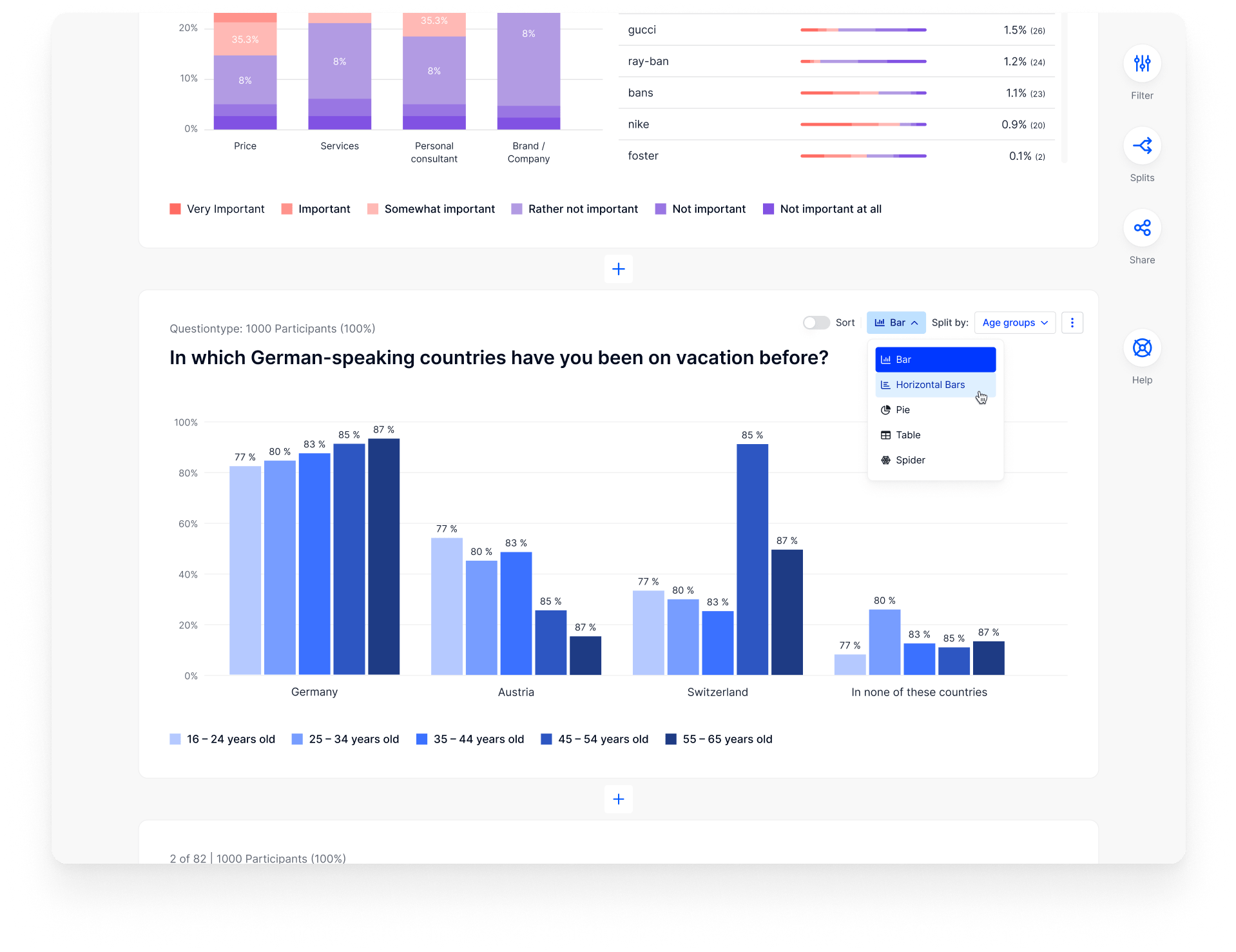
Get free access to the platform!
Join the loop 💌
Be the first to hear about new updates, product news, and data insights. We'll send it all straight to your inbox.
Get the latest market research news straight to your inbox! 💌
Wait, there's more

19.09.2024 | 9min read
Track Your Customer Retention & Brand Metrics for Post-Holiday Success

16.09.2024 | 10min read
Creative Checkup – Optimize Advertising Slogans & Creatives for ROI

03.09.2024 | 10min read
Get your brand Holiday Ready: 4 Essential Steps to Smash your Q4
- Skip to main content
- Skip to primary sidebar
- Skip to footer
- QuestionPro

- Solutions Industries Gaming Automotive Sports and events Education Government Travel & Hospitality Financial Services Healthcare Cannabis Technology Use Case AskWhy Communities Audience Contactless surveys Mobile LivePolls Member Experience GDPR Positive People Science 360 Feedback Surveys
- Resources Blog eBooks Survey Templates Case Studies Training Help center
Home Market Research
Experimental Research: What it is + Types of designs
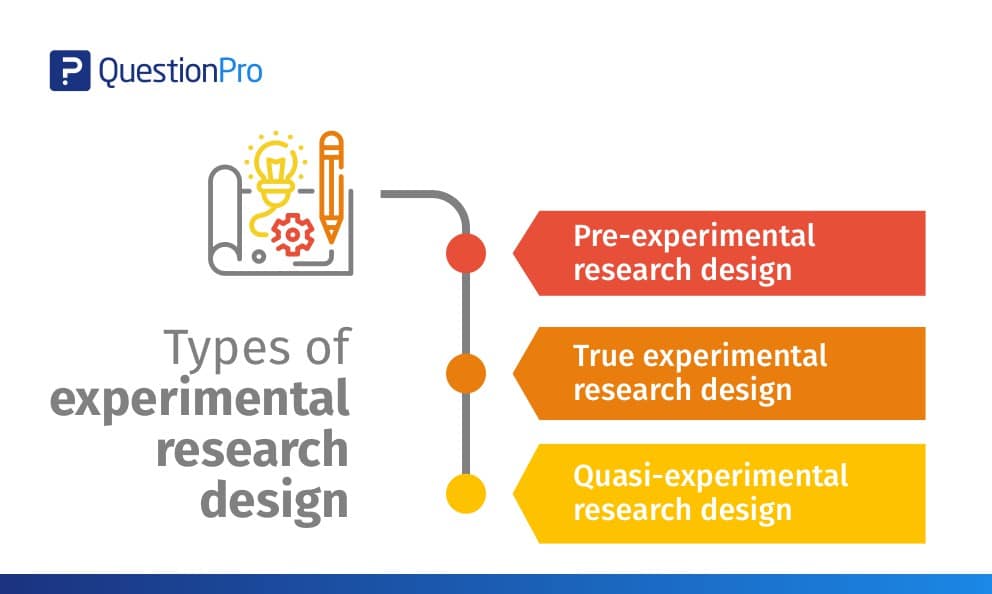
Any research conducted under scientifically acceptable conditions uses experimental methods. The success of experimental studies hinges on researchers confirming the change of a variable is based solely on the manipulation of the constant variable. The research should establish a notable cause and effect.
What is Experimental Research?
Experimental research is a study conducted with a scientific approach using two sets of variables. The first set acts as a constant, which you use to measure the differences of the second set. Quantitative research methods , for example, are experimental.
If you don’t have enough data to support your decisions, you must first determine the facts. This research gathers the data necessary to help you make better decisions.
You can conduct experimental research in the following situations:
- Time is a vital factor in establishing a relationship between cause and effect.
- Invariable behavior between cause and effect.
- You wish to understand the importance of cause and effect.
Experimental Research Design Types
The classic experimental design definition is: “The methods used to collect data in experimental studies.”
There are three primary types of experimental design:
- Pre-experimental research design
- True experimental research design
- Quasi-experimental research design
The way you classify research subjects based on conditions or groups determines the type of research design you should use.
0 1. Pre-Experimental Design
A group, or various groups, are kept under observation after implementing cause and effect factors. You’ll conduct this research to understand whether further investigation is necessary for these particular groups.
You can break down pre-experimental research further into three types:
- One-shot Case Study Research Design
- One-group Pretest-posttest Research Design
- Static-group Comparison
0 2. True Experimental Design
It relies on statistical analysis to prove or disprove a hypothesis, making it the most accurate form of research. Of the types of experimental design, only true design can establish a cause-effect relationship within a group. In a true experiment, three factors need to be satisfied:
- There is a Control Group, which won’t be subject to changes, and an Experimental Group, which will experience the changed variables.
- A variable that can be manipulated by the researcher
- Random distribution
This experimental research method commonly occurs in the physical sciences.
0 3. Quasi-Experimental Design
The word “Quasi” indicates similarity. A quasi-experimental design is similar to an experimental one, but it is not the same. The difference between the two is the assignment of a control group. In this research, an independent variable is manipulated, but the participants of a group are not randomly assigned. Quasi-research is used in field settings where random assignment is either irrelevant or not required.
Importance of Experimental Design
Experimental research is a powerful tool for understanding cause-and-effect relationships. It allows us to manipulate variables and observe the effects, which is crucial for understanding how different factors influence the outcome of a study.
But the importance of experimental research goes beyond that. It’s a critical method for many scientific and academic studies. It allows us to test theories, develop new products, and make groundbreaking discoveries.
For example, this research is essential for developing new drugs and medical treatments. Researchers can understand how a new drug works by manipulating dosage and administration variables and identifying potential side effects.
Similarly, experimental research is used in the field of psychology to test theories and understand human behavior. By manipulating variables such as stimuli, researchers can gain insights into how the brain works and identify new treatment options for mental health disorders.
It is also widely used in the field of education. It allows educators to test new teaching methods and identify what works best. By manipulating variables such as class size, teaching style, and curriculum, researchers can understand how students learn and identify new ways to improve educational outcomes.
In addition, experimental research is a powerful tool for businesses and organizations. By manipulating variables such as marketing strategies, product design, and customer service, companies can understand what works best and identify new opportunities for growth.
Advantages of Experimental Research
When talking about this research, we can think of human life. Babies do their own rudimentary experiments (such as putting objects in their mouths) to learn about the world around them, while older children and teens do experiments at school to learn more about science.
Ancient scientists used this research to prove that their hypotheses were correct. For example, Galileo Galilei and Antoine Lavoisier conducted various experiments to discover key concepts in physics and chemistry. The same is true of modern experts, who use this scientific method to see if new drugs are effective, discover treatments for diseases, and create new electronic devices (among others).
It’s vital to test new ideas or theories. Why put time, effort, and funding into something that may not work?
This research allows you to test your idea in a controlled environment before marketing. It also provides the best method to test your theory thanks to the following advantages:
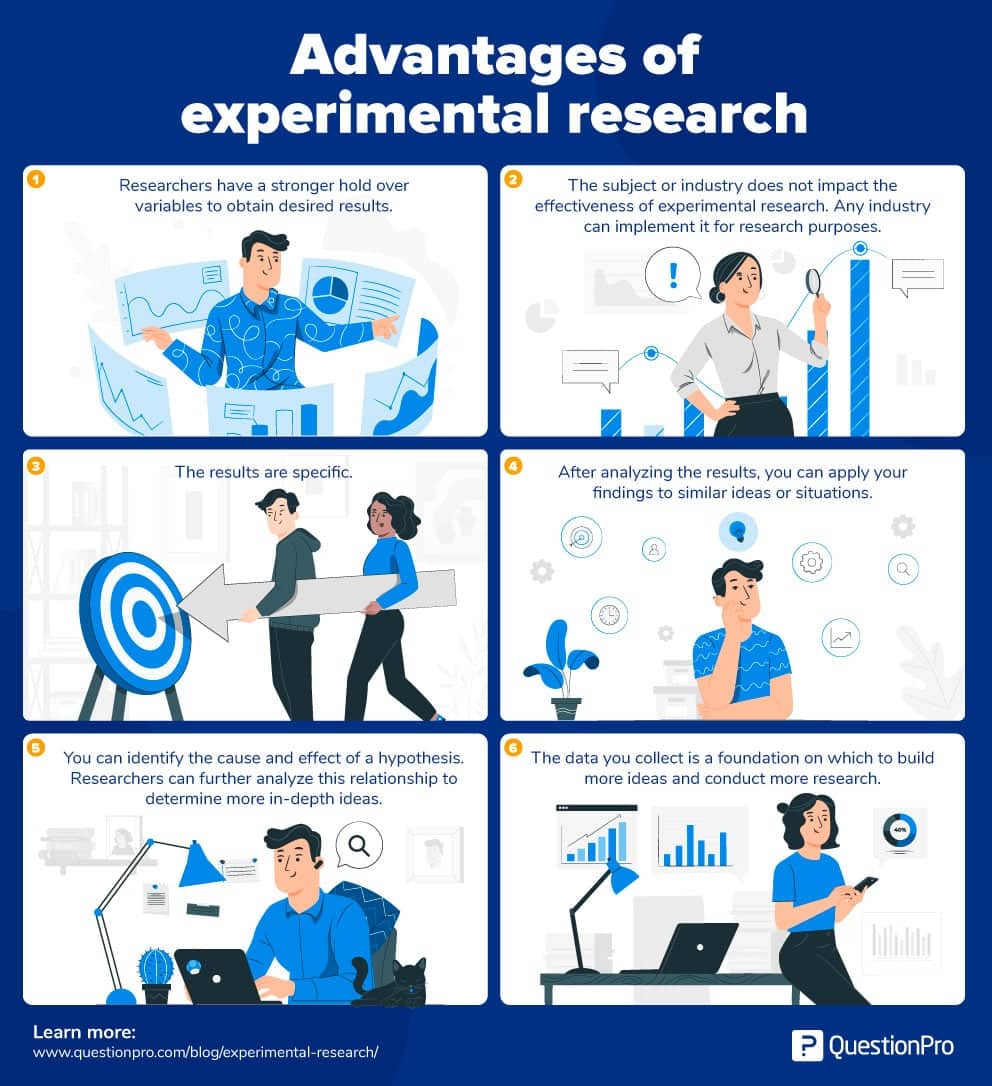
- Researchers have a stronger hold over variables to obtain desired results.
- The subject or industry does not impact the effectiveness of experimental research. Any industry can implement it for research purposes.
- The results are specific.
- After analyzing the results, you can apply your findings to similar ideas or situations.
- You can identify the cause and effect of a hypothesis. Researchers can further analyze this relationship to determine more in-depth ideas.
- Experimental research makes an ideal starting point. The data you collect is a foundation for building more ideas and conducting more action research .
Whether you want to know how the public will react to a new product or if a certain food increases the chance of disease, experimental research is the best place to start. Begin your research by finding subjects using QuestionPro Audience and other tools today.
LEARN MORE FREE TRIAL
MORE LIKE THIS

Total Experience in Trinidad & Tobago — Tuesday CX Thoughts
Oct 29, 2024

You Can’t Please Everyone — Tuesday CX Thoughts
Oct 22, 2024

Life@QuestionPro Presents: Andrews Sekar
Oct 14, 2024

Edit survey: A new way of survey building and collaboration
Oct 10, 2024
Other categories
- Academic Research
- Artificial Intelligence
- Assessments
- Brand Awareness
- Case Studies
- Communities
- Consumer Insights
- Customer effort score
- Customer Engagement
- Customer Experience
- Customer Loyalty
- Customer Research
- Customer Satisfaction
- Employee Benefits
- Employee Engagement
- Employee Retention
- Friday Five
- General Data Protection Regulation
- Insights Hub
- Life@QuestionPro
- Market Research
- Mobile diaries
- Mobile Surveys
- New Features
- Online Communities
- Question Types
- Questionnaire
- QuestionPro Products
- Release Notes
- Research Tools and Apps
- Revenue at Risk
- Survey Templates
- Training Tips
- Tuesday CX Thoughts (TCXT)
- Uncategorized
- What’s Coming Up
- Workforce Intelligence
Extract insights from Interviews. At Scale.
Experimental research in marketing: how to conduct it.
Home » Experimental research in marketing: How to conduct it
A/B testing strategy serves as a crucial approach in experimental research, especially in marketing. By comparing two versions of a product or marketing material, researchers can uncover valuable insights into consumer preferences. This method allows marketers to make data-driven decisions, ultimately enhancing their strategies and improving customer engagement.
When implementing an A/B testing strategy, it is important to define clear objectives and identify the variables to test. Whether examining website layouts, email campaigns, or pricing models, this systematic approach facilitates a deeper understanding of what resonates most with the target audience. Through iterative testing and analysis, marketers can refine their offerings for optimal effectiveness.
Understanding Experimental Research in Marketing
Experimental research in marketing focuses on understanding how different variables influence consumer behavior and decision-making. One common method used in this approach is the A/B testing strategy, where two variations of a marketing element are compared to determine which performs better. This structured method allows marketers to draw clear conclusions about the effectiveness of changes made to their campaigns.
In experimental research, it is crucial to establish clear objectives before conducting tests. Defining what you wish to learn will guide the design of your experiments and the selection of metrics to analyze. Additionally, ensuring a robust sample size and appropriate control conditions is essential. This approach provides reliable data, enabling marketers to understand which tactics resonate more with their target audience, ultimately leading to improved marketing strategies. Understanding these principles can enhance the overall effectiveness of marketing campaigns and foster better customer engagement.
The Role of Experimental Research in Marketing Strategies
Experimental research plays a vital role in developing effective marketing strategies through precise methodologies. One prominent technique is the A/B testing strategy, which involves comparing two variations of a marketing element to determine which performs better. This experimental approach allows marketers to make informed decisions based on data rather than assumptions, leading to improved campaign effectiveness.
Employing an A/B testing strategy can enhance various aspects of marketing, including website design, email copy, and call-to-action placements. By systematically analyzing customer responses to different versions, marketers gain critical insights into consumer preferences. Regularly conducting experiments not only optimizes current strategies but also fosters a culture of continuous learning and adaptation. In an increasingly competitive market, embracing experimental research equips marketers with the tools to tailor their strategies to meet consumer needs effectively.
Benefits of Implementing an A/B Testing Strategy
Implementing an A/B testing strategy offers marketers a clear pathway to understand customer preferences better. It allows for direct comparison between different versions of a product or marketing message, highlighting what resonates more with the audience. By systematically evaluating these variations, businesses can derive actionable insights, leading to improved conversions and enhanced customer satisfaction.
One significant benefit of A/B testing is the ability to make data-driven decisions. Instead of relying on intuition or guesswork, marketers can analyze real-time results to determine which approach is more effective. Furthermore, this strategy fosters a culture of continuous improvement, as teams regularly test and refine their tactics. Ultimately, an effective A/B testing strategy empowers businesses to maximize their marketing efforts, ensuring they reach their target audience with the right message at the right time.
Designing Your A/B Testing Strategy for Marketing Experiments
A/B testing strategy begins with clearly defining your objectives. This sets the foundation for your experiments, ensuring that each test addresses specific goals, such as increasing conversion rates or improving user engagement. Following this, you should identify the key variables to test; these could include headlines, images, calls to action, or even different layouts. Keeping the variations focused allows for clearer insights into what works best.
Next, segment your audience to ensure that the tests are statistically valid. This helps you reach different demographics effectively, enhancing the reliability of your results. After running the tests, analyze the collected data meticulously to derive actionable insights. By doing this, you'll gain a deeper understanding of customer preferences and behaviors, which can guide your future marketing strategies. A well-planned A/B testing strategy not only refines your campaigns but also builds a more data-driven approach to decision-making in your marketing efforts.
Identifying Variables and Formulating Hypotheses
Identifying variables is a crucial step in any experimental research, particularly for developing a successful A/B testing strategy. It begins with pinpointing the factors you want to manipulate, such as pricing, design, or messaging. Each variable can influence consumer behavior in various ways. Understanding these variables allows researchers to create effective hypotheses about the expected results of each change.
When formulating hypotheses, it's essential to articulate clear and testable predictions based on the identified variables. For instance, you might hypothesize that a lower price will increase website conversions compared to the original price. This hypothesis can guide your A/B testing strategy and set the framework for your experiment. It's vital to ensure that your hypotheses are specific and measurable so that you can accurately interpret the outcomes of your tests. Following these steps will empower marketers to gain deeper insights and make informed decisions that align with their business goals.
Creating Effective Control and Experimental Groups
In any experimental research, creating effective control and experimental groups is crucial for accurate results. An A/B testing strategy typically involves dividing participants into two groups: one receiving the experimental treatment and the other serving as the control. To ensure reliability, it's essential that these groups are comparable in all respects except for the variable being tested. This means they should share similar demographics, behaviors, and preferences.
Next, sample size plays a vital role in minimizing the impact of random variations. A larger sample size can enhance the reliability of results, as it reduces the likelihood that differences observed between the groups are due to chance. Finally, careful randomization in assigning participants to groups further strengthens the integrity of the research. By following these principles, marketers can ensure their findings are valid and actionable, ultimately driving more effective marketing strategies.
Analyzing Results from Your A/B Testing Strategy
To effectively analyze results from your A/B testing strategy, you must first ensure that your data is robust and clearly defined. Start by summarizing your findings, focusing on key performance indicators (KPIs) that relate directly to your initial objectives. These KPIs could include conversion rates, engagement metrics, and user feedback. This offers a clear picture of which variation performed better and why.
Next, interpret the results with caution, considering both statistical significance and practical relevance. It's essential to differentiate between statistically significant results and those that might not lead to meaningful business changes. Assessing additional factors such as user experience, market trends, and even external influences during the testing phase can provide deeper insights. Make sure to communicate your findings effectively, outlining both successes and areas for improvement to inform future A/B tests.
Interpreting Data for Informed Marketing Decisions
Interpreting data is crucial for making informed marketing decisions. The insights derived from an A/B testing strategy can spotlight what resonates with your audience. By comparing two variations of a marketing element, such as an email subject line or a landing page design, marketers can pinpoint which version performs better. This process not only improves engagement but also informs future marketing strategies.
In any experimental research, clear data interpretation is paramount. First, ensure you understand the key metrics relevant to your goals, such as conversion rates and user engagement levels. Next, consider the external factors that may influence your results, like seasonality or economic trends. Finally, regular analysis of trends and patterns will enhance your understanding and lead to smarter marketing decisions moving forward. Mastering this skill ensures that your strategies are not only effective but also aligned with your audience’s needs.
Common Pitfalls and How to Avoid Them
A/B testing strategy can reveal valuable insights, but it’s not foolproof. One common pitfall is the failure to define clear objectives before testing. Without a specific goal, interpreting results can become confusing, leading to misguided decisions. Ensure that your experiments are driven by well-defined hypotheses to maintain focus.
Another trap involves inadequate sample sizes. Small sample sizes can skew results and lead to overconfidence in misleading outcomes. Before conducting your A/B tests, ascertain that your sample is large enough to produce statistically significant results. It’s also vital to allow sufficient time for your tests to run, as external factors can affect outcomes.
Lastly, don't ignore the importance of continuous monitoring and adaptation. Regularly review your A/B tests to identify unexpected variations in user behavior. By addressing these common pitfalls, you can conduct more effective and reliable experimental research in marketing.
Conclusion: Mastering Experimental Research with A/B Testing Strategy
In conclusion, mastering experimental research through an A/B testing strategy empowers marketers to make data-driven decisions. By systematically testing variations in campaigns, businesses can identify what resonates most with their audience. This approach not only helps optimize marketing efforts but also enhances overall customer engagement and satisfaction.
Moreover, embracing an A/B testing strategy fosters a culture of innovation. It encourages teams to think creatively and adapt based on real data, leading to continuous improvement. Ultimately, companies can drive stronger results and stay competitive in the ever-evolving marketplace.
Turn interviews into actionable insights
On this Page
Marketing research process: 5 steps explained
You may also like, understanding selective coding in grounded theory.
Understanding rigor in research methodologies
What is saturation in qualitative research.
Unlock Insights from Interviews 10x faster
- See a Live demo
- Start Analyzing Free
The Four Types of Research Design — Everything You Need to Know
Updated: October 07, 2024
Published: December 23, 2022
When you conduct research, you need to have a clear idea of what you want to achieve and how to accomplish it. A good research design enables you to collect accurate and reliable data to draw valid conclusions.
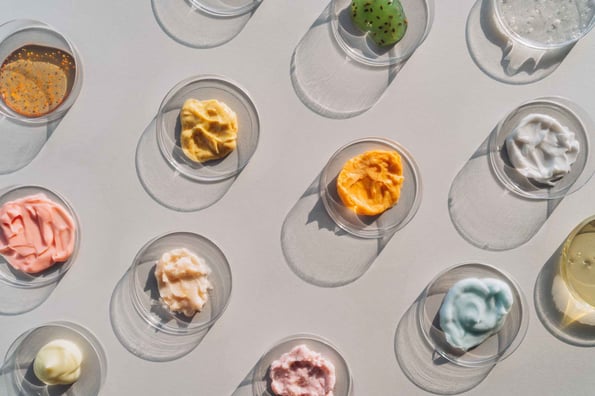
In this blog post, we'll outline the key features of the four common types of research design with real-life examples from UnderArmor, Carmex, and more. Then, you can easily choose the right approach for your project.
Table of Contents
What is research design?
The four types of research design, research design examples.
Research design is the process of planning and executing a study to answer specific questions. This process allows you to test hypotheses in the business or scientific fields.
Research design involves choosing the right methodology, selecting the most appropriate data collection methods, and devising a plan (or framework) for analyzing the data. In short, a good research design helps us to structure our research.
Marketers use different types of research design when conducting research .
There are four common types of research design — descriptive, correlational, experimental, and diagnostic designs. Let’s take a look at each in more detail.
Researchers use different designs to accomplish different research objectives. Here, we'll discuss how to choose the right type, the benefits of each, and use cases.
Research can also be classified as quantitative or qualitative at a higher level. Some experiments exhibit both qualitative and quantitative characteristics.
.png)
Free Market Research Kit
5 Research and Planning Templates + a Free Guide on How to Use Them in Your Market Research
- SWOT Analysis Template
- Survey Template
- Focus Group Template
Download Free
All fields are required.
You're all set!
Click this link to access this resource at any time.
Experimental
An experimental design is used when the researcher wants to examine how variables interact with each other. The researcher manipulates one variable (the independent variable) and observes the effect on another variable (the dependent variable).
In other words, the researcher wants to test a causal relationship between two or more variables.
In marketing, an example of experimental research would be comparing the effects of a television commercial versus an online advertisement conducted in a controlled environment (e.g. a lab). The objective of the research is to test which advertisement gets more attention among people of different age groups, gender, etc.
Another example is a study of the effect of music on productivity. A researcher assigns participants to one of two groups — those who listen to music while working and those who don't — and measure their productivity.
The main benefit of an experimental design is that it allows the researcher to draw causal relationships between variables.
One limitation: This research requires a great deal of control over the environment and participants, making it difficult to replicate in the real world. In addition, it’s quite costly.
Best for: Testing a cause-and-effect relationship (i.e., the effect of an independent variable on a dependent variable).
Correlational
A correlational design examines the relationship between two or more variables without intervening in the process.
Correlational design allows the analyst to observe natural relationships between variables. This results in data being more reflective of real-world situations.
For example, marketers can use correlational design to examine the relationship between brand loyalty and customer satisfaction. In particular, the researcher would look for patterns or trends in the data to see if there is a relationship between these two entities.
Similarly, you can study the relationship between physical activity and mental health. The analyst here would ask participants to complete surveys about their physical activity levels and mental health status. Data would show how the two variables are related.
Best for: Understanding the extent to which two or more variables are associated with each other in the real world.
Descriptive
Descriptive research refers to a systematic process of observing and describing what a subject does without influencing them.
Methods include surveys, interviews, case studies, and observations. Descriptive research aims to gather an in-depth understanding of a phenomenon and answers when/what/where.
SaaS companies use descriptive design to understand how customers interact with specific features. Findings can be used to spot patterns and roadblocks.
For instance, product managers can use screen recordings by Hotjar to observe in-app user behavior. This way, the team can precisely understand what is happening at a certain stage of the user journey and act accordingly.
Brand24, a social listening tool, tripled its sign-up conversion rate from 2.56% to 7.42%, thanks to locating friction points in the sign-up form through screen recordings.
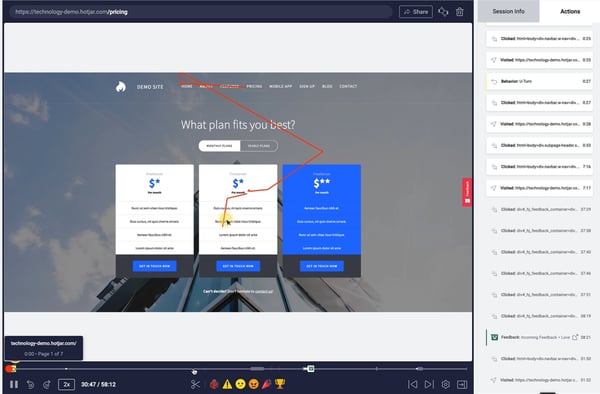
Carma Laboratories worked with research company MMR to measure customers’ reactions to the lip-care company’s packaging and product . The goal was to find the cause of low sales for a recently launched line extension in Europe.
The team moderated a live, online focus group. Participants were shown w product samples, while AI and NLP natural language processing identified key themes in customer feedback.
This helped uncover key reasons for poor performance and guided changes in packaging.
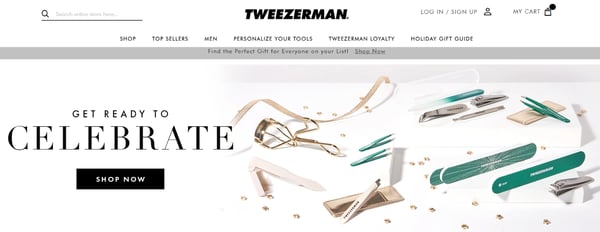

IMAGES
VIDEO
COMMENTS
Experimental marketing consists of research based on a hypothesis of what kinds of marketing activities will appeal to potential customers, then collecting and analyzing the...
Experimental research provides empirical evidence and data to support important organizational decisions, such as product testing and experimentation, marketing strategies, or improving operational processes and activities.
Experimental studies are crucial in market research in testing hypotheses, evaluating marketing strategies, and understanding consumer behavior. For example, a company may conduct an experiment to determine …
In this article, we present key tenets of good experimental design and provide some practical considerations for industrial marketing researchers. We first discuss how …
What is Experimental Research? Experimental research is a study conducted with a scientific approach using two sets of variables. The first set acts as a constant, which you use to measure the differences of the second set. …
Experimental research in marketing focuses on understanding how different variables influence consumer behavior and decision-making. One common method used in this approach is the …
This chapter described the relevant steps involved when planning and executing experimental research in marketing. While experimentation is a central type of data …
An experimental design is used when the researcher wants to examine how variables interact with each other. The researcher manipulates one variable (the independent variable) and observes the effect on another …